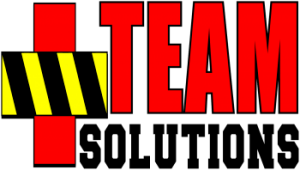Become a Better Presenter by Using These '4 Pillars of Adult Instruction'
Based on 20+ years and 10,000+ adult students, find out what expert instructors do that makes them engaging, confident and in demand.
I recently facilitated an exercise for some folks who were enrolled in their organization’s leadership development program. The more strategic level work I do, the more I notice when there’s a disconnect between what’s delivered versus what the participant actually learns.
Here’s some further context:
- The leadership program takes place over 2 years where they participate in a series of leadership development exercises, both individually and as a team.
- They have to apply to be included and only a few are selected.
- In our part of the project, the participants rotate through different stations that challenged their team to overcome obstacles and seek solutions.
- When they arrive at a station, they have high expectations that they’ll experience a measurable transformation.
- In other words, they were there to improve their strategies, not their tactics.
Tactics = the specifics of HOW something is done (turn the knob clockwise, go knock on 30 doors, etc.)
Strategies = the over-arching WHY something is done (to improve the lives of others, to increase market awareness, etc.)
While the stations had a tactical component to them, the outcomes were driven by their use of strategic decision-making, not whether they used the right tactic. As a facilitator, this point is critical.
Most students (and unfortunately, many facilitators) tend to focus on what they know, what they can touch and what is the easiest to measure: i.e. tactics.
- Do you know what material is used to make this widget?
- Did you complete the task in 5 minutes or less?
- Was the problem solved?
Again, when the purpose is to evaluate a tactical-based exercise, questions such as those may be appropriate outcomes to facilitate. However, when the purpose is to help the participant improve their strategic decision-making, these questions and expectations obfuscate their desired outcome.
** From an exercise design standpoint, the needs and expectations of the participant should always be aligned with the content that is delivered.
For example: If they enroll in an 8-hour course to learn how to be a chef, we shouldn’t spend 6-hours showing them how to peel carrots.
In a classroom setting, we can also create our lessons through the filter of whether they are transactional (tactical) or transformational (strategic). For example:
- mowing the lawn is transactional (tactical)
- creating a welcoming environment for a cookout is transformational (strategic)
In reality, many lessons require more context and work best when they include a mixture of both transactional and transformational content. One way to measure the effectiveness and accuracy of your strategy lessons is to append a tactical statement with “so that…”
This method ensures there is a bridge between the tactical exercise and the strategic outcome.
Example:
- Mow the lawn … so that … we can create a welcoming environment for our cookout.
- Push this chain uphill … so that … you can improve your teamwork.
With ever-expanding choices for students to access educational content, they are raising the bar on their expectations. As coaches, facilitators, instructors, etc. it’s incumbent upon us to raise the quality and accuracy of service to meet or exceed those expectations.
What other methods do you use to facilitate strategic outcomes?
Become a Better Presenter by Using These '4 Pillars of Adult Instruction'
Based on 20+ years and 10,000+ adult students, find out what expert instructors do that makes them engaging, confident and in demand.
